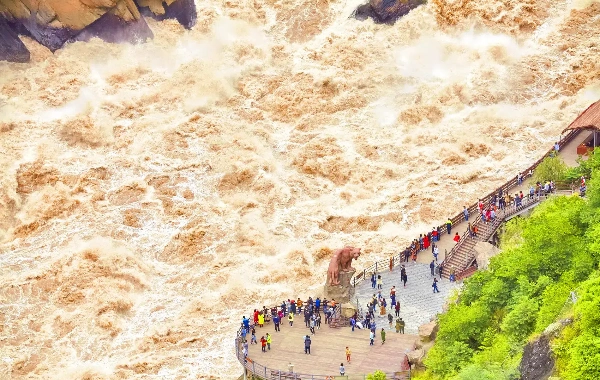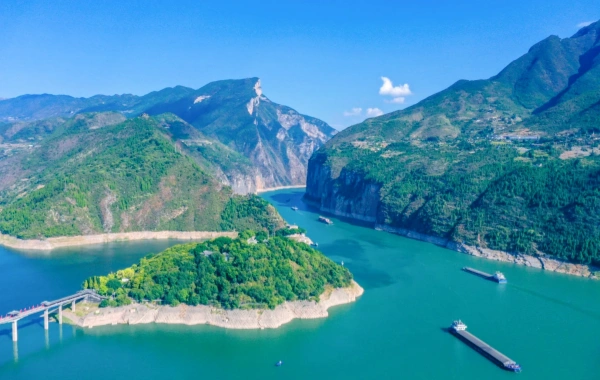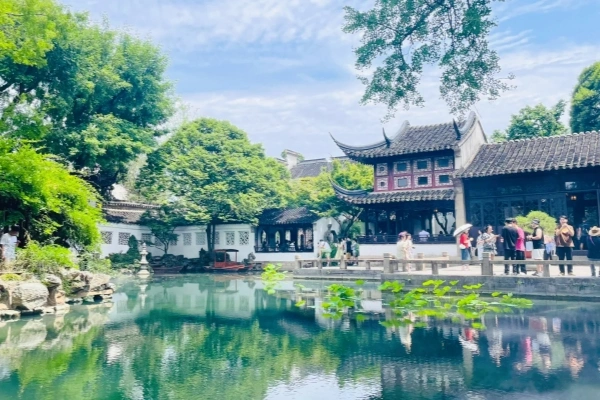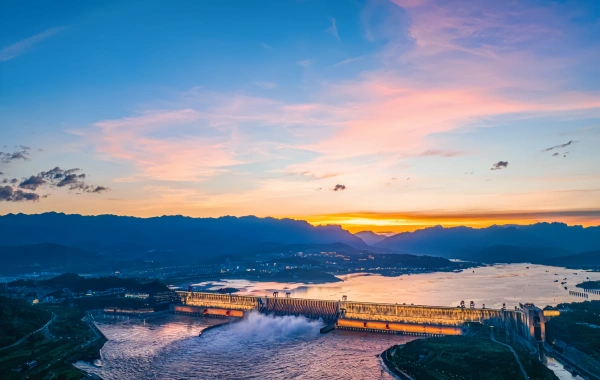Yangtze River
Historical Overview
The Yangtze Basin hosted early Neolithic cultures, including the Hemudu and Liangzhu, who developed rice farming and jade craftsmanship. During the Han Dynasty (206 BCE–220 CE), the river became a strategic trade route, linking central China to the coast. Key historical events include:
- The Battle of Red Cliffs (208 CE), a pivotal Three Kingdoms-era conflict.
- The Tang Dynasty (618–907 CE) expansion of maritime trade via the Yangtze Delta.
- The 20th-century Three Gorges Dam project (1994–2012), the world’s largest hydropower station.
In 1988, a 1,240-km stretch of the river’s middle and upper reaches was designated a UNESCO Biosphere Reserve.
Geographical Layout
The Yangtze’s course divides into three sections:
- Upper Reaches: Originating in Tanggula Mountains (Qinghai), it carves through steep gorges, including the Tiger Leaping Gorge in Yunnan.

- Middle Reaches: Flows through the Sichuan Basin and Three Gorges (Qutang, Wu, Xiling), forming a natural border between northern and southern China.

- Lower Reaches: Widens into the Yangtze Delta, nurturing Shanghai’s economic hub and the UNESCO-listed classical gardens of Suzhou.
Major tributaries include the Han River (Wuhan) and Min River (Chengdu).

Major Attractions
- Three Gorges: A 193-km stretch of dramatic cliffs and historic sites like the Baidi City ruins.
- Three Gorges Dam: A 2.3-km-long engineering marvel generating 22,500 MW of electricity.

- Lesser Three Gorges: A serene 50-km section near Wushan with karst peaks and plank roads.
- Shennong Stream: A pristine tributary with hanging coffins and traditional peapod boats.
- Fengdu Ghost City: A cliffside complex of Taoist temples and mythical “ghost” statues.

- Jinsha River: The Yangtze’s upper section, known for gold mines and Dinosaur Valley fossils.
Suggested Itineraries
-
Classic Cruise (3–4 Days):
Chongqing (Three Gorges Dam) → Fengdu Ghost City → Shennong Stream → Lesser Three Gorges → Yichang (Disembark)
Highlights: Scenic gorges, engineering wonders, and cultural folklore. -
Cultural Exploration (5–6 Days):
Chengdu (Leshan Giant Buddha) → Emei Mountain → Yibin (Jinsha River Confluence) → Shibaozhai Pagoda → Wuhan (Yellow Crane Tower) → Shanghai (Bund)
Highlights: Buddhist heritage, river confluence, and modern metropolises. - Comprehensive Journey (7–8 Days):
Lhasa (Tibetan Plateau) → Yunnan (Tiger Leaping Gorge) → Three Gorges Dam → Suzhou Gardens → Shanghai (Disneyland) → East China Sea
Highlights: Tibetan culture, Himalayan landscapes, and coastal contrasts.
Yangtze River Tours We Recommend:
Xi'an & Yangtze River Cruise Tour
8-Day Guizhou & Yangtze River Cruise
China Yangtze River & Panda Tour
China Landscape and Yangtze Tour
Ticket Purchase
- Cruises: Book 3–6 months in advance via platforms like Ctrip or Trips.com. Prices range from ¥2,000–¥10,000 (budget to luxury).
- Local Tours: Day trips to Shennong Stream (¥300–¥500) or Three Gorges Dam (¥150–¥300) available on-site.
- Free Access: Most riverbanks and public parks are open year-round.
- By Plane: Major hubs include Chongqing Jiangbei Airport (CKG) and Shanghai Pudong (PVG).
- By High-Speed Rail: Shanghai to Wuhan (4.5 hours), Wuhan to Chongqing (6 hours).
- By Ferry: Overnight cruises from Chongqing to Yichang (2 nights) or Shanghai to Chongming Island (1 hour).
- Local Transit: Metro lines in Shanghai/Wuhan; shared taxis (mianche) in rural Yunnan.
Best Time & Tips
- Peak Seasons: April–May (spring blooms) and October–November (autumn foliage). Avoid July–August (monsoon floods).
- Crowds: Weekends and Chinese holidays (e.g., National Day, Oct 1–7) are busiest.
- Essentials:
- Pack rain gear (upper reaches) and sun protection (delta).
- Wear sturdy shoes for hiking gorges.
- Respect local fishing traditions; avoid littering.
- Prohibited Items: Drones without permits, swimming in restricted zones.
Contact Us
What Our Clients Say?
Based on 10,000+ traveler reviews













